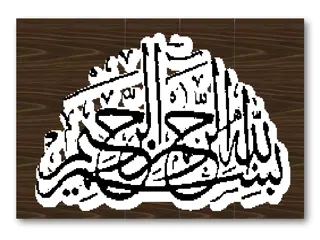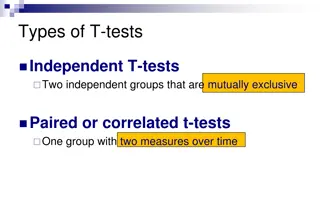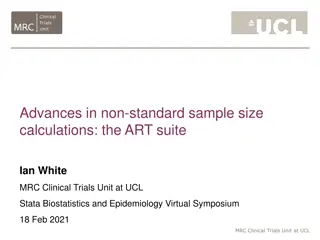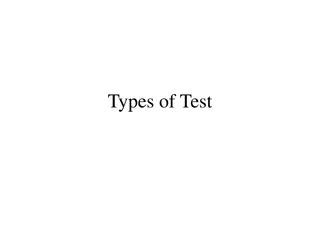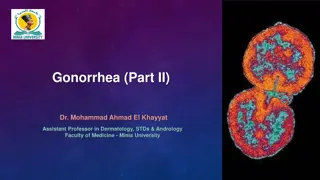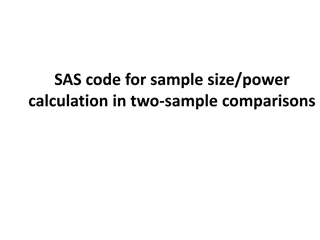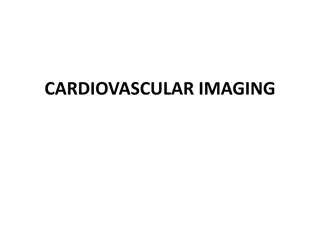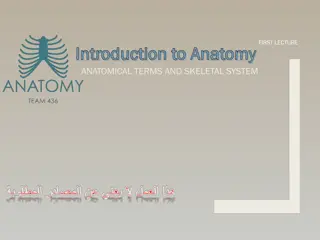Anatomy Written Tests Overview with Sample Questions
Explore different types of anatomy questions commonly seen in written tests, including general anatomy, structural anatomy, functional anatomy, topographical anatomy, imaging anatomy, clinical anatomy, microscopic anatomy, and embryo-related topics. Sample questions and answers are provided for each category to help you prepare effectively.
Download Presentation

Please find below an Image/Link to download the presentation.
The content on the website is provided AS IS for your information and personal use only. It may not be sold, licensed, or shared on other websites without obtaining consent from the author. Download presentation by click this link. If you encounter any issues during the download, it is possible that the publisher has removed the file from their server.
E N D
Presentation Transcript
Anatomy Written Tests Explanation with Sample Questions
Disclaimer Please keep in mind that particular test does not necessarily consist of all types of questions listed in this model PowerPoint presentation.
General anatomy Questions on information explained during lectures. Q: Give an example of a flat bone. A: Scapula.
Structural anatomy Counts for majority of a giving test. Structural anatomy components: Structural anatomy labeling: Q: List all articular surfaces of the condylus humeri. A: Capitulum, Trochlea Structural anatomy naming: Q: Which structure serves for tendo calcaneus/Achilles tendon attachment. A: Trochanter major / Greater trochanter A: Tuber calcanei / Calcaneal tuberosity
Functional anatomy It is important part of each test. Q: What is the function of acetabulum? A: Articular fossa for the hip joint.
Topographical anatomy It is important part of each test. Q: What passes in the sulcus intertubercularis humeri? A: tendo capitis longi musculi bicipitis brachii / tendon of long head of biceps brachii
Imaging anatomy Usually 1-5 questions of labeling structures on a normal X-ray, CT, MRI. A: Epicondylus medialis humeri / Medial epicondyle of humerus.
Clinical anatomy Questions on clinical applications of anatomical concepts related to basic medical application and not advanced pathological nor surgical concepts. These clinical notes were mentioned during lectures and practical seminars and are found in your textbooks and listed under clinical notes on the test information webpage. Q: What is the background for the carpal tunnel syndrome? A: Compression of soft median nerve / nervus medianus against hard structures and walls of the carpal canal / canalis carpi.
Microscopic anatomy Usually 1-3 questions Basic ultrastructural components Q: Which kind of cartilage covers the articular surface of bones? A: Hyaline cartilage
Embryology/Development anatomy Usually 1-3 simple questions concerning embryological origin or developmental pattern of anatomical structures. Q: At what age does the distal epiphysial plate of the radius complete its ossification? A: 17-19
In depth questions There can be one (or more) challenging question. Those will focus on difficult concepts that require integrating past and upcoming chapters. Q: Name the bones where attaches the retinaculum musculorum flexorum forming anterior border of the carpal canal? A: Eminentia carpi ulnaris (os pisiforme, hamulus ossis hamati), eminentia carpi radialis (tuberculum ossis scaphoidei, tuberculum ossis trapezii) / Ulnar carpal eminence (pisiform, hook of hamate), radial carpal eminence (scaphoid tubercle, tubercle of trapezium)
Schemes One scheme counting for 2-3 points. Selected from the list of the required schemes. Objective is to show in a simplified sketch the proper anatomical arrangement of the composite structures with proper labeling. Proper relationship must be illustrated in your drawing. Q: Draw bones of the hand. The 8 carpal bones must be arranged and labeled in proper order. Metacarpal bones placed in proper articulating arrangement with the second row of carpal bones. Each metacarpal bone matches its articulating with carpal bone(s). Radius and ulna in their proper anatomical relationship illustrating the articulating facets and styloid process, with proper articulation arrangement with the first row of carpal bones. Clearly shown narrow space between radius and scaphoid and lunate, while wider space between ulna and triquetrum. Major mistake = 0 Mark (No Partial points!). Minor mistakes = gradual loss of points.







